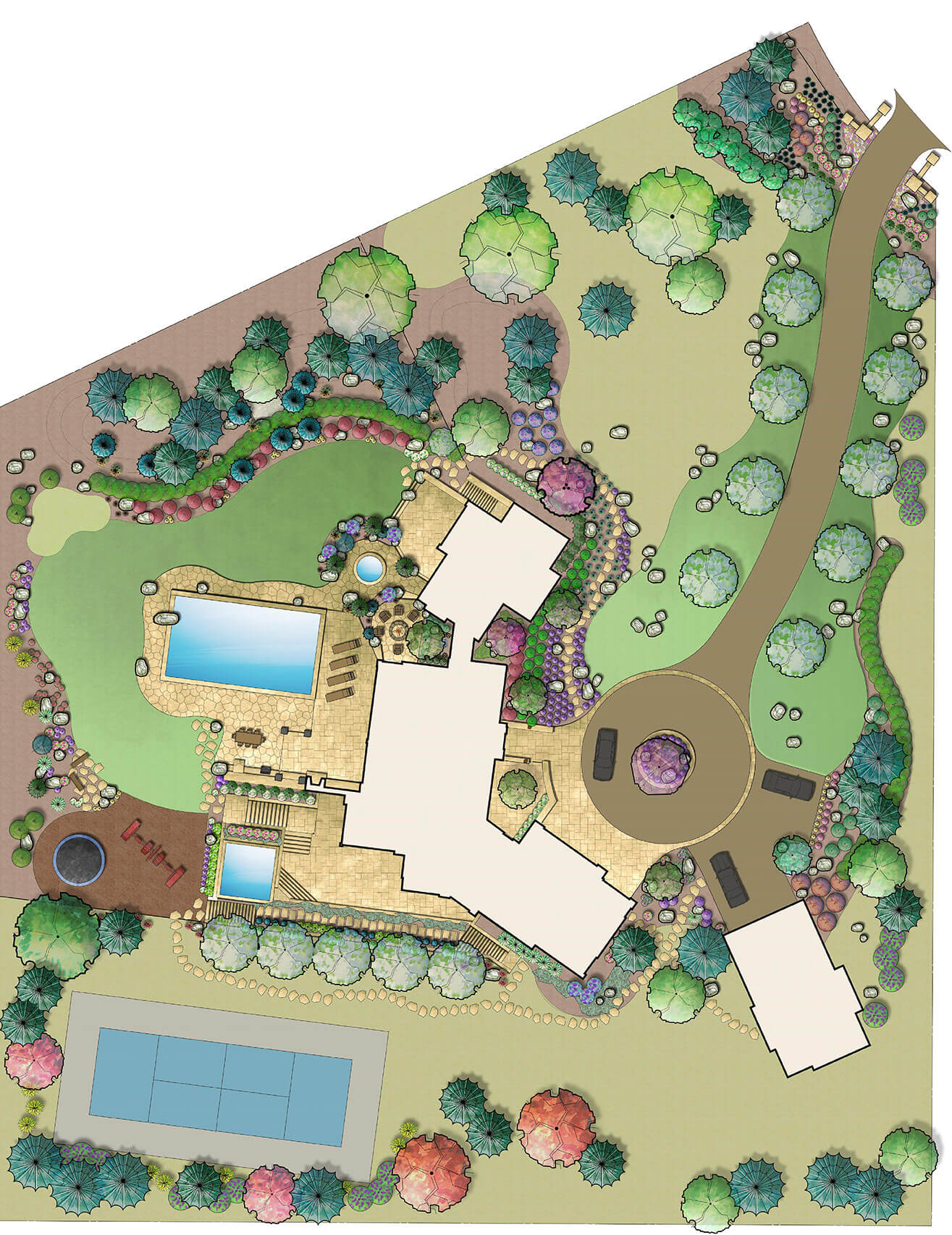Landscaping your front yard is not just about planting flowers and pruning bushes; it’s also about creating an appealing space that enhances the appearance of your property while increasing its value. Whether you are looking to make a strong first impression or simply want to enjoy a lovely outdoor environment, a well-thought-out landscape design can transform your front yard into a breathtaking masterpiece. This article will take you through the entire the landscaping process, making sure that you are equipped with everything to bring your ideas to life.
From understanding the advantages of hiring experts to exploring DIY options, we will discuss all the essential elements that lead to a flourishing project. You will learn about the importance of proper lawn care and maintenance, how to choose the right plants for your landscape, and effective hardscaping ideas that can maximize your outdoor living space. Whether you choose to hire an expert or take on the challenge yourself, our detailed guide will help you steer clear of common mistakes and create a lovely and practical front yard that you can be happy with.
A Value of Expert Landscaping
Investing in expert landscaping can transform your front yard into a gorgeous outdoor space that improves your house's curb appeal. While many homeowners may consider doing the task on their own, engaging professionals ensures that the design and execution are done correctly. Professionals have the expertise and knowledge to steer clear of common mistakes and errors that can arise in DIY projects, ultimately saving time and money in the future.
An additional benefit of hiring a landscaping service is the ability to create a personalized design tailored to your particular needs and preferences. Landscaping professionals can assess your yard and recommend the best plants, hardscaping elements, and layout to match your surroundings and lifestyle. Their knowledge not only includes aesthetic considerations but also practical aspects such as drainage, soil health, and plant compatibility, contributing to a landscape that flourishes year-round.
Finally, professional landscaping can significantly increase the value of your property. A well-designed landscape is more than just aesthetically appealing; it can enhance the overall appeal of your home to potential buyers. Research show that attractive landscaping can add significant value, often reclaiming a larger portion of investment than other home improvements. Therefore, by opting for professional landscaping, you not only benefit from a beautiful outdoor space but also secure a wise financial decision for your property's future.

Lawn Care Essentials
Maintaining a vibrant lawn requires consistent attention and care. The key to a thriving lawn starts with proper mowing techniques. Try to cut your grass at the proper height for its specific type, as mowing too short can damage the roots and result in weed growth. Keeping he has a good point in good condition ensures a clean cut, which aids your lawn heal quickly and resist diseases. Additionally, aim to vary your mowing pattern each time you mow the grass to encourage vertical growth and reduce soil compaction.
Applying fertilizers is a further crucial element of lawn care. Understanding your soil's nutrient needs is important, and soil testing can offer useful insights into what amendments could be necessary. Apply fertilizers during the growing, following recommended schedules for your climate and grass type. Incorporating a combination of organic and synthetic fertilizers can encourage robust growth and color, guaranteeing your lawn is healthy throughout the year.
Watering plays a key role in lawn maintenance. It's crucial to provide adequate water without overdoing it, as both under-watering and over-watering can cause problems like drought stress or root rot. A rule of thumb is to water deeply and infrequently to encourage roots to grow further into the soil. Consider using a rain gauge to track rainfall and adjust your watering schedule accordingly, so that your lawn stays hydrated and thriving throughout season long.
Eco-friendly Garden Design Techniques
Adopting green landscaping techniques not only benefits the environment while also improves the aesthetics and usability of your yard. One of the key elements is the selection of indigenous plants, which are perfectly suited to the local climate and soil types. These plants require less water and care, making them a perfect choice for environmentally friendly gardeners. In addition, native plants nurture native wildlife, such as pollinators, creating a healthy ecosystem in your garden.
Using water-efficient landscaping techniques, like xeriscaping, can greatly reduce water usage. This strategy entails selecting drought-tolerant plants, using mulch to preserve moisture, and installing efficient irrigation methods. By creating a garden that thrives on minimal water, you not just conserve resources but also reduce the need for chemical fertilizers and pesticides, encouraging a better environment for your residence and neighborhood.
Lastly, practicing composting and utilizing organic materials can enhance soil quality and reduce waste. Composting kitchen scraps and yard waste fertilizes the soil, offering essential nutrients to your plants without relying on chemical fertilizers. This sustainable method promotes a thriving landscape while supporting waste reduction efforts. By adopting these practices, you not just create a stunning outdoor space but also take significant steps toward a eco-friendly future.
